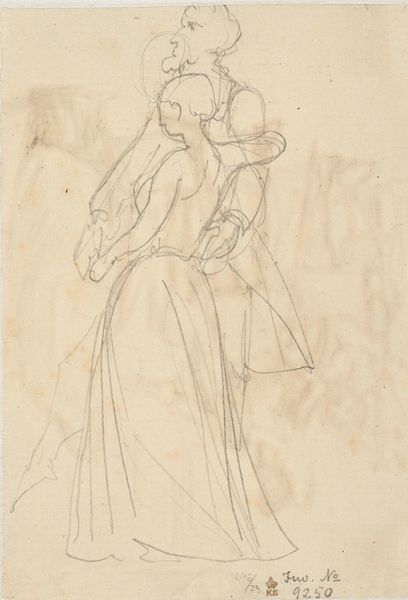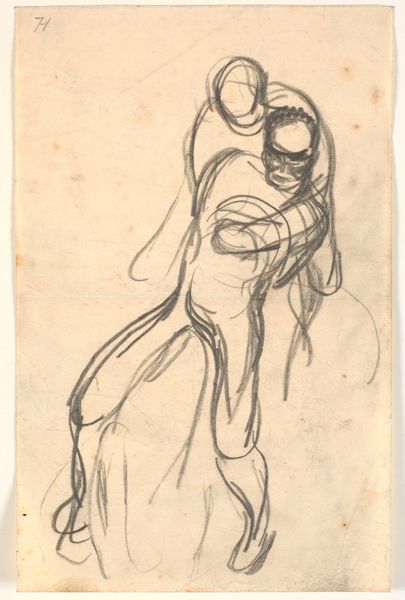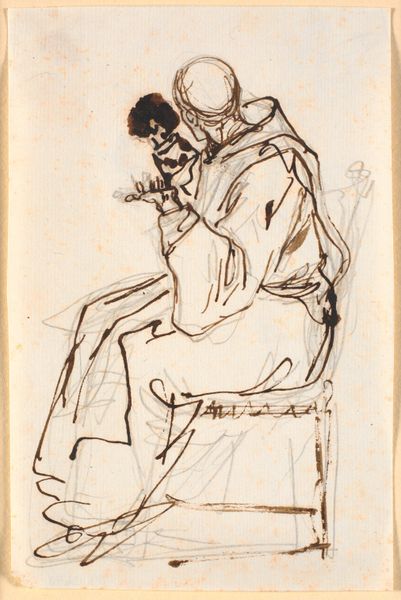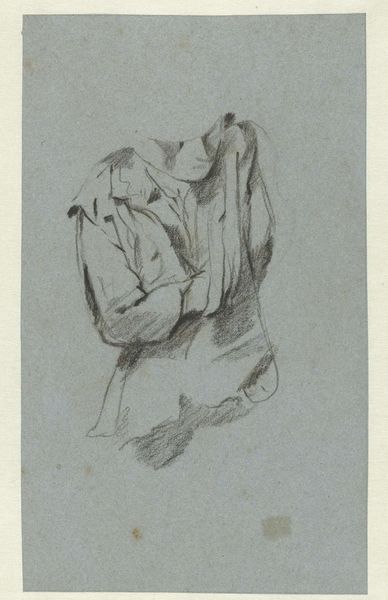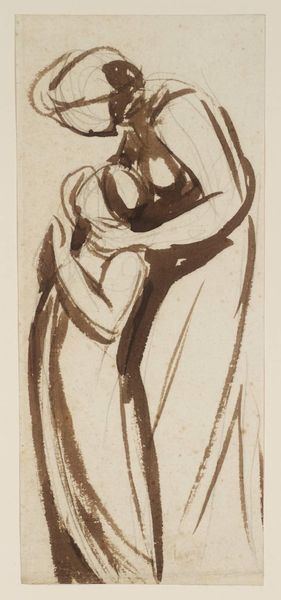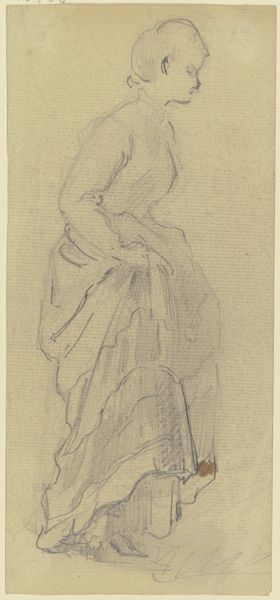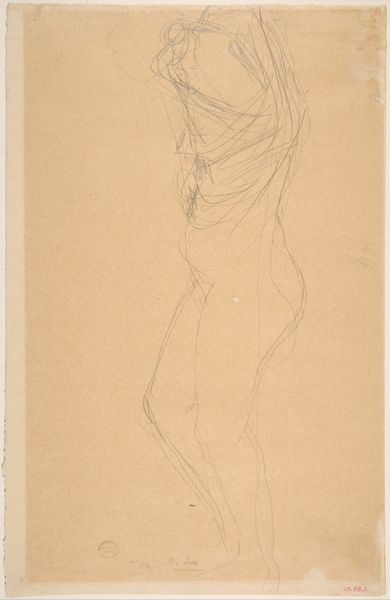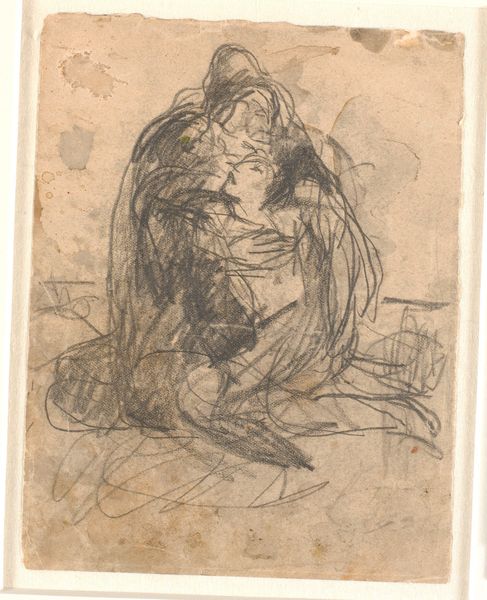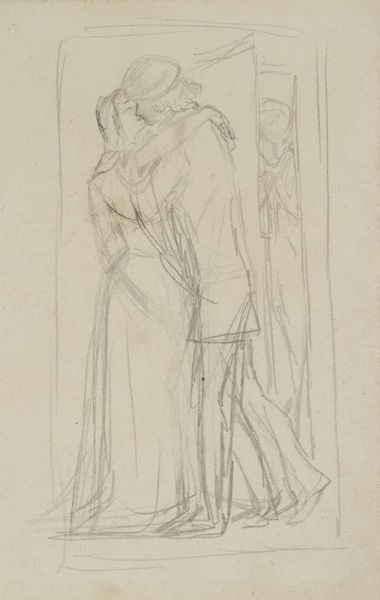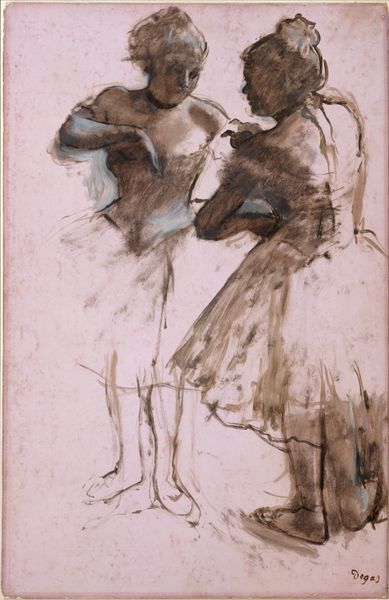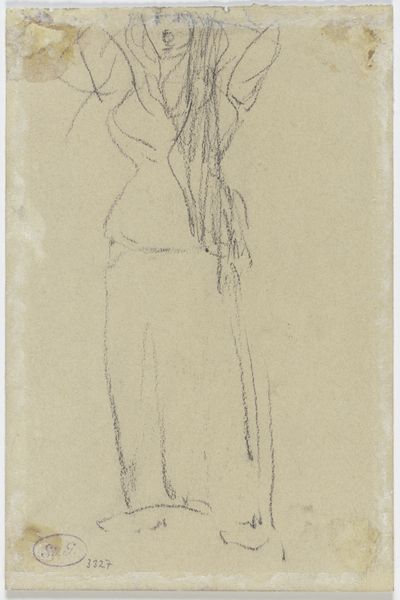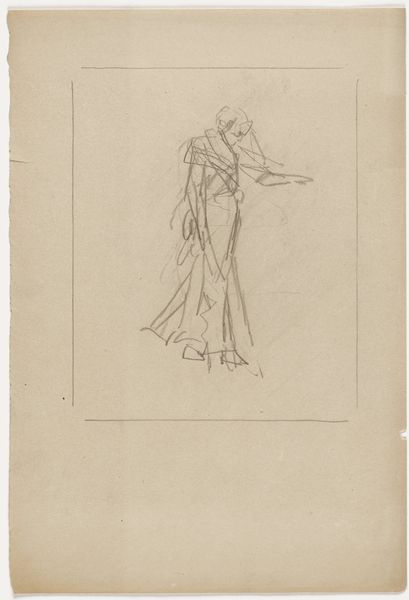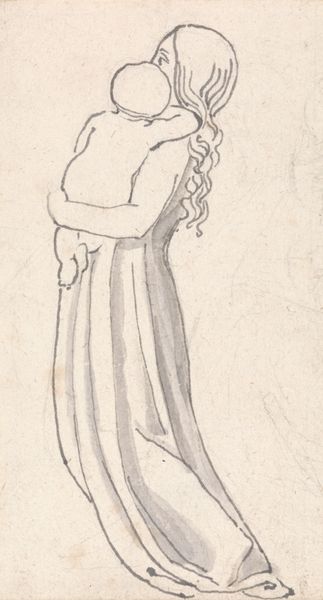
drawing, charcoal
#
drawing
#
figuration
#
expressionism
#
charcoal
Dimensions: 172 mm (height) x 117 mm (width) (bladmaal)
Curator: Welcome. We're looking at "Kompositionsskitse med en eller to figurer" or "Compositional Sketch with one or two Figures" by Karl Isakson, thought to have been made sometime between 1878 and 1922. Editor: My immediate impression is one of raw vulnerability. The charcoal strokes are so frantic, so unresolved...it feels like a glimpse into a troubled psyche. Curator: The medium itself, charcoal on paper, lends itself to this immediacy. It's a relatively inexpensive and accessible material, inviting experimentation and quick notation of ideas. Notice how the artist hasn’t labored over detail but rather concentrated on capturing movement and form in its essence. Editor: I’m particularly drawn to the way the figures intertwine – are we seeing a mother and child? Or perhaps a depiction of grief or support? The way the faces are obscured only amplifies the universal nature of these emotions. The dark charcoal marks almost become like the shadow of the self and invite introspective pondering on our emotional depths. Curator: The Expressionist style definitely pushes beyond mere representation. Isakson seems focused on communicating internal feeling, and you see the intensity within this drawing style and medium used. The suggestive contours ask us to contemplate about figuration beyond the visible, urging us to look for the deeper connections with raw and unvarnished feelings of everyday life. Editor: I can see in Expressionism something that rejects the ornamental and strives to tap into shared memories about inner conflicts and empathy. And even though a seemingly simple sketch, one starts seeing these layers in his artistic choice to capture such primal human feelings within an everyday medium and style. Curator: Right, and beyond just pure aesthetic representation the figures are in an artistic format that captures what it's like to navigate human relations. The charcoal is both means and messenger of shared understanding across time, which adds to its significance. Editor: This close inspection allows us to feel closer to the artist and maybe recognize how, using seemingly simple means of drawing and shading, an object may evoke the viewer’s memory and even self-introspection on many cultural symbols. Curator: Absolutely, and from this materialist viewpoint, you’re also revealing connections between the act of artmaking, the culture in which the artwork emerges, and the artwork’s reception, even by modern eyes. Editor: An important addition indeed and definitely helps bring it all into a broader frame of appreciation of Isakson's artistic choices, to the culture where they come from, and the universal, human quality to which these images speak.
Comments
No comments
Be the first to comment and join the conversation on the ultimate creative platform.
